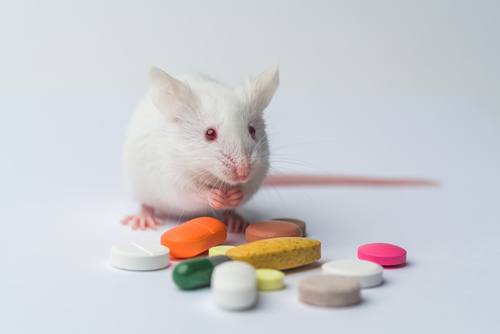Blocking JNK1 Protects, Reverses Tissue Scarring in IPF, Mouse Study Shows

Blocking production of the enzyme JNK1 in cells lining the lungs’ airways protected mice from developing induced idiopathic pulmonary fibrosis (IPF), and almost completely reversed tissue fibrosis (scarring) in a mouse model, a study shows.
The study, “Airway epithelial specific deletion of Jun-N-terminal kinase 1 attenuates pulmonary fibrosis in two independent mouse models,” was published in the journal PLOS ONE.
One of the hallmarks of IPF is the buildup of a type of connective tissue cells called myofibroblasts, which produce large amounts of proteins from the extracellular matrix (ECM) — the network surrounding and supporting cells. This leads to tissue fibrosis.
Myofibroblasts are the main contributors to the production of proteins that leads to tissue fibrosis, but lung epithelial cells — the cells that line the outer surface of the lungs — also produce these proteins, it has been reported.
A process known as epithelial-mesenchymal transition (EMT) involves the genetic and molecular signatures of an epithelial cell (e.g., skin cells) being switched to those of a mesenchymal cell (e.g., connective tissue cells). When EMT is activated in epithelial cells, it induces the production of collagen and other ECM proteins, leading to fibrosis.
Recently, a team of researchers from the University of Vermont and colleagues discovered an enzyme, called c-Jun-N-terminal kinase 1 (JNK1), which controls the process of EMT driven by the fibrosis-inducing protein transforming growth factor-beta (TGF-beta). They found that JNK1 promotes the production of proteins associated with fibrosis in lung epithelial cells cultured in a lab dish. They found these cells were less able to undergo EMT in the absence of JNK1.
Based on these results, the team designed a study to investigate if blocking production of JNK1 specifically in lung epithelial cells would protect mice from developing IPF triggered by TGF-beta or bleomycin, an anti-cancer drug commonly used to induce IPF.
The team demonstrated that when exposed to either bleomycin or TGF-beta, levels of activated JNK1 in the lungs of affected animals increased and followed the same spatial pattern observed in lung tissue samples isolated from IPF patients.
To test if blocking the production of JNK1 would protect mice from fibrosis, investigators generated animals that, when fed a chemical called doxycycline (DOX), became unable to produce JNK1 specifically in their lung epithelial cells.
Results showed that exposure to DOX one week before induction with bleomycin or TGF-beta almost completely protected animals from developing IPF. A more detailed analysis of lung epithelial cells isolated from these animals revealed that blocking JNK1 production shut down the activity of genes involved in EMT.
To determine if blocking JNK1 would affect mice with fibrosis, the team exposed animals to TGF-beta to induce fibrosis for two weeks and then fed them DOX for an another two weeks. In these mice, tissue scarring was “almost completely reversed,” they said.
“The demonstration that delayed ablation [blocking] of Jnk1 in epithelial cells prevented the progression of fibrosis, and more importantly reversed the existing increases in fibrosis in [the animal] model of fibrosis indicates the potential therapeutic relevance of targeted inhibition of JNK1,” the researchers said.
“Given the presence of active JNK in lungs from patients with IPF, targeting JNK1 in airway epithelia may represent a potential treatment strategy to combat this devastating disease,” they added.
Celgene is currently developing a therapeutic approach targeting JNK1, called CC90001, being tested in patients with IPF in a Phase 2 clinical trial (NCT03142191) that is currently recruiting. More information on contacts and locations is available here.







